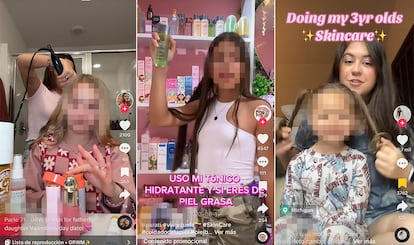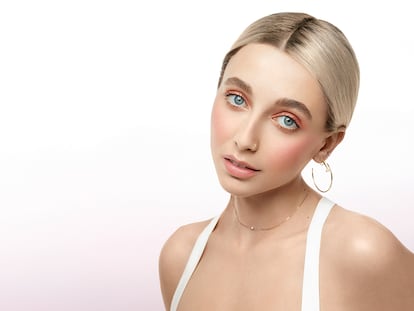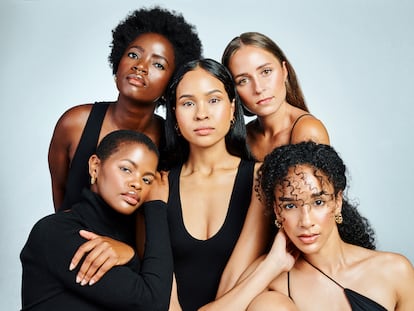The Sephora kids explosion: obsession with beauty routines is reaching younger audiences
Preteens are flocking to cosmetics stores, driven by the popularity of online skincare tutorials, with detrimental effects on their skin and mental health

Kids imitate what they see, and in the age of the internet, what they see online are obsessive beauty habits. Skincare culture is becoming more and more prevalent, and is typified by the public airing of daily routines composed of a passel of products. Words like serum, retinol, collagen, peeling and hyaluronic acid have become part of our everyday lexicon. This obsessive attention to our skin, combined with social pressure to achieve an impeccable glow, has given birth to a mental health condition that’s been dubbed cosmeticorexia, an addiction to skincare defined by the excessive purchasing and use of such products. The phenomenon has been primarily noted among women, and the affected age range begins early. Beauty stores have been inundated by little girls and preteens who are hooked on cosmetics they don’t need. This practice doesn’t just reflect a shift in their age group’s interests, but can also have an effect on their health. Skin experts warn of a rise in irritation, acne and dermatitis among the very young, a reaction to potent active ingredients in the products kids are using in order to imitate their favorite influencers.
It’s easy to see signs of the trend online. The search function on platforms like TikTok or Instagram reveal young people explaining skincare routines, showing off cosmetic products as though they were toys. In one video, a nine-year-old girl walks down the aisles in a beauty store adding products to her basket. “As her mom, I spoil her, and I’m going to let her use them and even buy them for her,” explains her mother, who is holding the camera. The post is accompanied by the term “Sephora kids”, and was shared by the Candela y la Dani account, which has more than 13,000 followers on TikTok. There are countless similar examples on the platform, in addition to a host of other kinds of content that invites users to tend to their skincare.
To open an account on TikTok you have to be at least 13 years old, according to the platform’s policy for the security and wellbeing of minors. Younger kids are only able to appear on accounts that are administered by an adult. Due to that fact, in many of the Sephora kids’ tutorials, moms stand alongside them as they apply their products. Kassie, a six-year-old girl from the United States, gazes at the camera next to her mom, sharing her facial skincare and makeup routine in a video that has been seen 33 million times.
To measure the rise of the skincare routine, one may turn to the figures that track the volume of such content on digital platforms. On Google’s search engine, use of the word “skincare” has steadily risen over time, it’s ascension having accelerated beginning with the pandemic, during the same year that TikTok exploded. On that social network, there are around 17 million posts with the hashtag #skincare. In addition, the tags #SephoraKids and #ChildSkinCare have accumulated more than 400 million views.
Rise in dermatitis
Dermatologist Alejandro Lobato recently saw a 13-year-old patient at Barcelona’s Hospital del Mar. During their consultation, the boy, accompanied by his mother, showed him the “eight or nine products” including creams, masks and shampoos, that constitute his skincare routine. “I was very surprised that an adolescent would have that obsession, and that his mother didn’t see anything wrong with it,” says the specialist. After their visit, Lobato looked into the matter and realized, after speaking with his colleagues, that the phenomenon was becoming more and more common. “Social networks have a large part of the responsibility for this,” Lobato says.
A recent study conducted in the United States focused on the causes and effects of this trend: cosmetics contain ingredients that are toxic for minors, and very potent active ingredients; in consequence, there has been a rise in contact dermatitis. Dermatologist Alba Calleja, who works at Madrid’s Doctor Morales Raya Clinic, confirms that in Spain, she has observed more preteen patients with the skin condition, in addition to cases of irritation and acne.
The problem, explain dermatologists, is that minors are using products that they don’t need, like retinol, hyaluronic acid and anti-wrinkle creams. “It doesn’t make sense to use retinol before you turn 25 to 30 years old. It’s an anti-aging product,” says Calleja. In many cases, adult skin care enthusiasts aren’t taking care of their skin properly, either. “I probably wouldn’t recommend the routines of the people that these kids are imitating. People can have very complex routines with eight products or more. In the morning and at night,” says the dermatologist.
The consequences of this overkill are not limited to physical impacts, but can also affect mental health and detonate problems with self-esteem, anxiety and depression. “Adolescents at that age tend to suffer from more self-esteem problems and emotional shifts,” says Calleja. She says that the demand for having smooth, perfect skin from a young age is “unrealistic”, given that everyone’s skin has some kind of imperfection.
It’s not all bad news, according to the specialist: she considers it a good thing that going to the dermatologist has “become fashionable”. “If people start going at an early age, we can prevent or start treating patients who have health conditions earlier,” Calleja explains.
An expanding business
The TikTok effect is almost always the same: one or several content creators record themselves using and recommending a product or brand, their videos go viral and soon after the creams, serums and oils are disappearing off the shelves. Many beauty influencers are paid to promote and lead their followers to certain personal care products.
Employees in these establishments attest to the power of cosmeticoreixa. They’re seeing increasingly younger customers, who almost always come in looking for a particular product or brand. “On weekends, 12-year-olds come in groups, asking for something they’ve seen on TikTok. Even if it’s expensive, whatever is in fashion sells out quickly in the store and online,” says one of the workers at a well-known beauty store in Madrid’s Puerta del Sol. On the social network itself, videos circulate of employees displaying Sephora kids’ favorite items.
@paoramosbeauty El fenómeno de las NIÑAS EN SEPHORA 👧🤣 #sephora #niñasensephora #kidsinsephora #girlsinsephora #niñadesephor #niñasephora #drunkelephant ♬ Feel Good - Tundra Beats
One of the latest favorite brands of the young skincare fans is Drunk Elephant, a line of creams for what it calls “clean beauty” because, it claims, it “chooses ingredients based on biocompatibility”. Its products star in many of viral videos. The brand was bought by the Japanese business group Shiseido in 2019 for $845 million. Figures from Statista show that global sales for children and baby skincare products stood at approximately $4.135 million in 2021, an increase of nearly $233 million from the previous year. “This market is estimated to grow steadily in the coming years to around $5.6 billion in 2026,” states the website.
Filters and photo editing that lighten the skin, and the costly products that impose impossible beauty standards are impacting kids’ self-image and self-esteem. “It’s important for kids to know that the smooth skin they see on social media is not real,” warns Calleja.
Sign up for our weekly newsletter to get more English-language news coverage from EL PAÍS USA Edition
Tu suscripción se está usando en otro dispositivo
¿Quieres añadir otro usuario a tu suscripción?
Si continúas leyendo en este dispositivo, no se podrá leer en el otro.
FlechaTu suscripción se está usando en otro dispositivo y solo puedes acceder a EL PAÍS desde un dispositivo a la vez.
Si quieres compartir tu cuenta, cambia tu suscripción a la modalidad Premium, así podrás añadir otro usuario. Cada uno accederá con su propia cuenta de email, lo que os permitirá personalizar vuestra experiencia en EL PAÍS.
¿Tienes una suscripción de empresa? Accede aquí para contratar más cuentas.
En el caso de no saber quién está usando tu cuenta, te recomendamos cambiar tu contraseña aquí.
Si decides continuar compartiendo tu cuenta, este mensaje se mostrará en tu dispositivo y en el de la otra persona que está usando tu cuenta de forma indefinida, afectando a tu experiencia de lectura. Puedes consultar aquí los términos y condiciones de la suscripción digital.
More information
Archived In
Últimas noticias
Most viewed
- Reinhard Genzel, Nobel laureate in physics: ‘One-minute videos will never give you the truth’
- Oona Chaplin: ‘I told James Cameron that I was living in a treehouse and starting a permaculture project with a friend’
- Pablo Escobar’s hippos: A serious environmental problem, 40 years on
- Why we lost the habit of sleeping in two segments and how that changed our sense of time
- The fall of a prolific science journal exposes the billion-dollar profits of scientific publishing











































